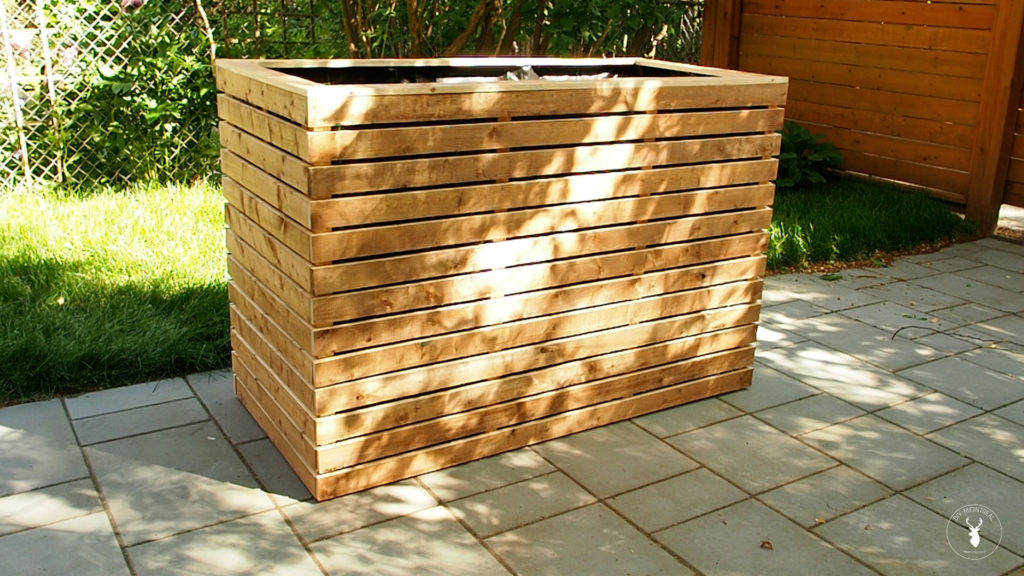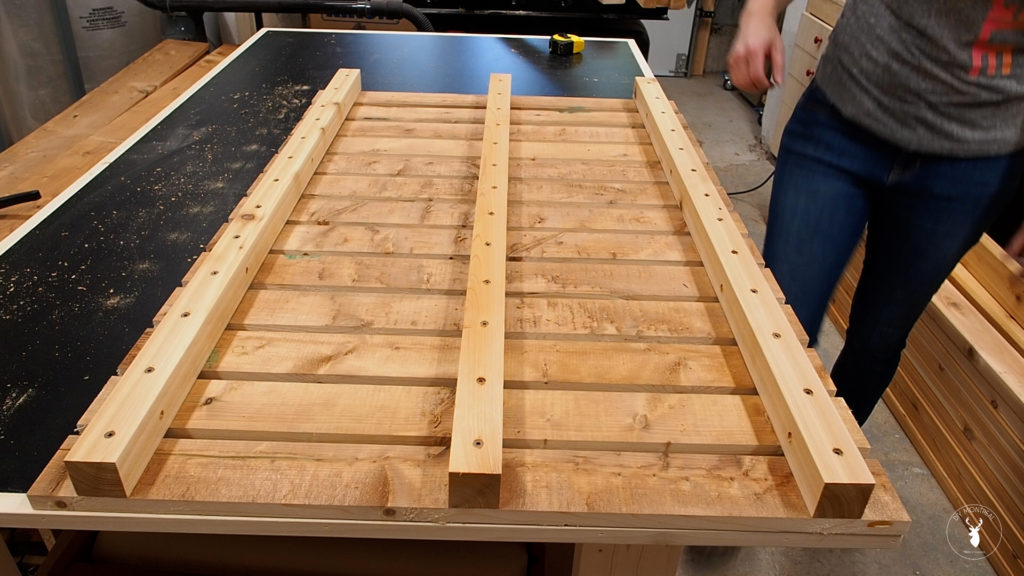It’s almost summer and time to start planting those vegetables! If you live in a urban area, or just want a contained raised vegetable bed, building a planter box is a great solution.
I designed this specific planter box for a friend according to her specifications, with the design being inspired by a picture she saw on Pinterest. She wanted a really deep tall planter, with a modern look featuring thin spaced out slatted boards.
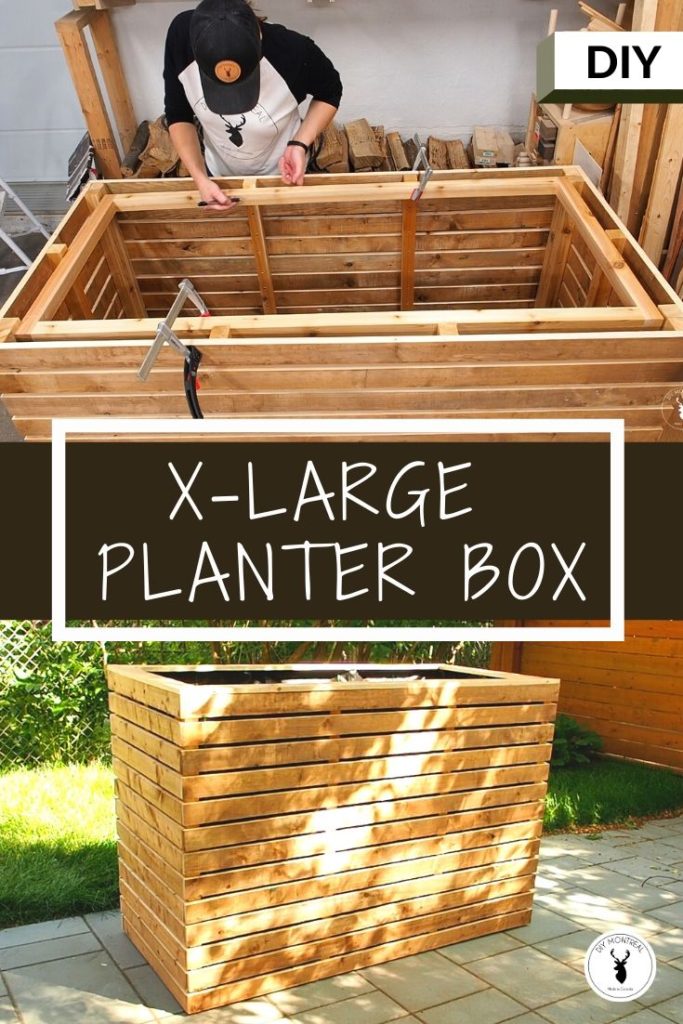
Tools & Materials Used
Cedar would have been ideal, but my friend brought me treated pine, and that’ll work just as well. I also got a bunch of cedar 2 by 4s that will be used for the inner supports, and last but not least, a ton of decking screws.
Here are the tools & materials I used for this build:
- Cedar 1×6 fence boards
- Cedar 2x4s
- Decking screws
- Pocket screws
- Weed barrier
- Staples
Get The Plans
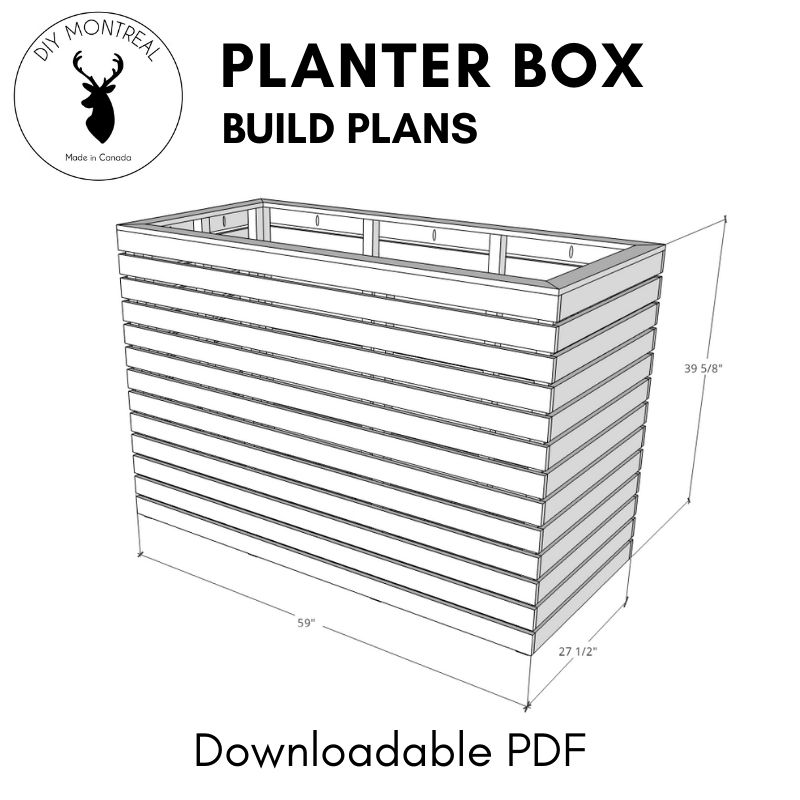
How to Build a Slatted Planter Box
At the miter station, I started by trimming off the end off all of the fence boards to get a square, clean crisp edge. With that done, I set my stop block so I could cut all my boards to their final length, ensuring they would be consistent in length.
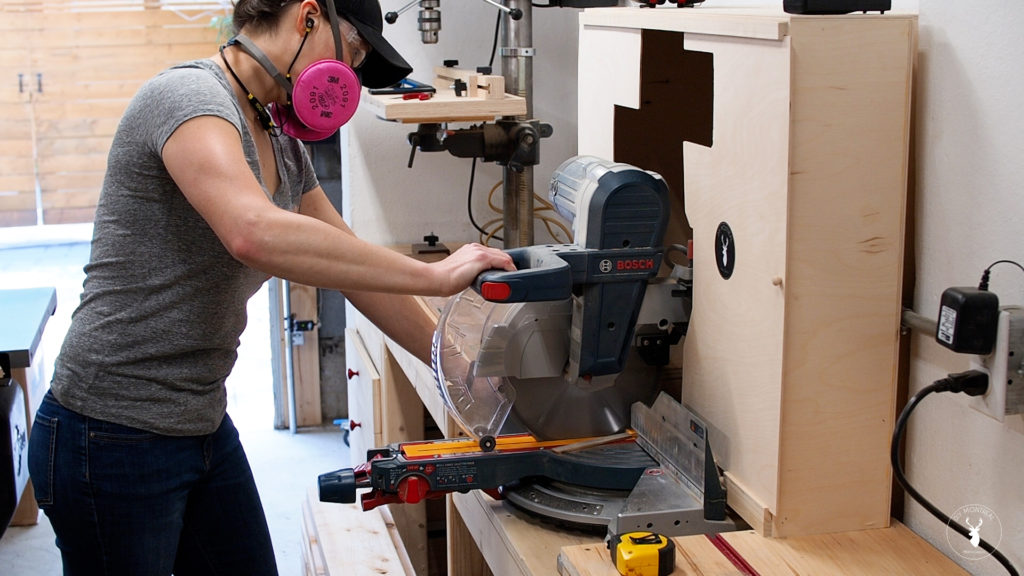
Next, I ripped down the boards on the table saw and cut 2 slats from each board. I first started by trimming off the rounded edge from one side of all my boards. I could then move my fence in and lock it down to the final width, and run the board through twice in order to end up with 2 equally sized slats. I then repeated this for all of my boards until I ended up with a nice stack of slats.
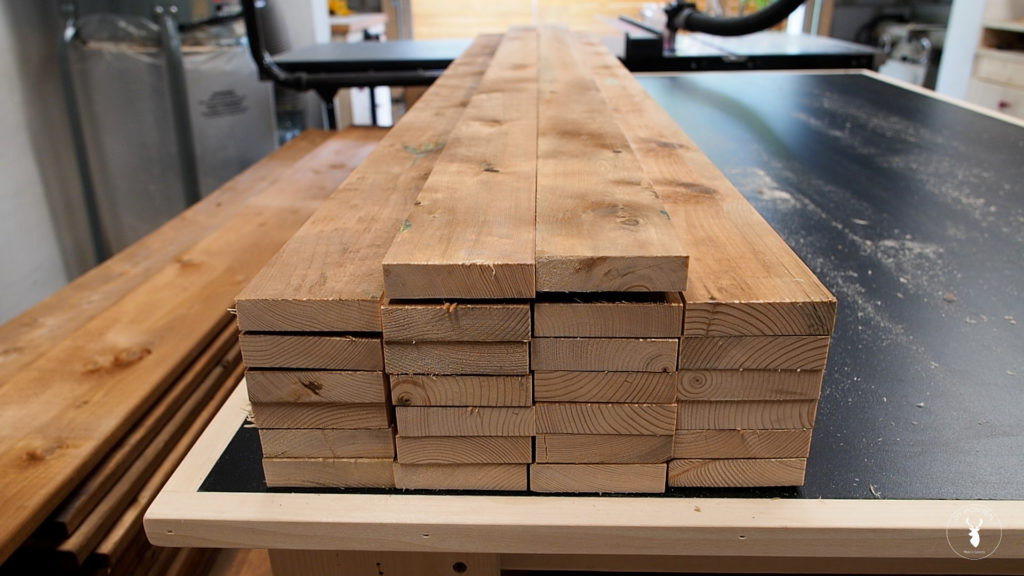
The inner frame will be made from cedar 2x4s. Just as before I used a stop block to cut equally sized pieces, then over at the table saw, I first ripped off one edge, then moved the fence in, then ripped my 2 pieces, ending up with 8 identical square vertical supports.
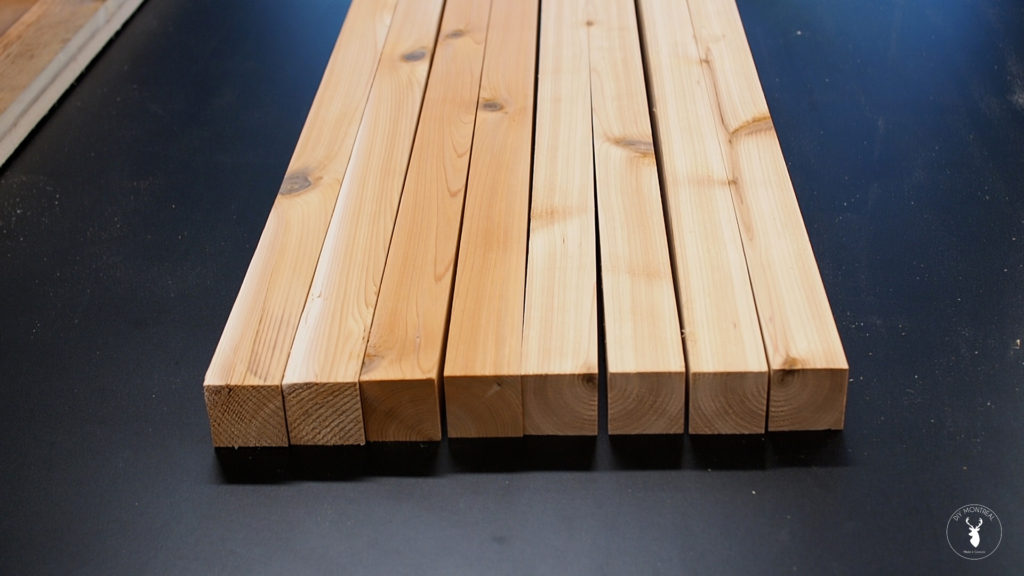
To build this planter, I’ll assemble one side at a time into a panel, then connect the four panels like an interlocking puzzle. I laid out all the slats for one of the long sides and lined up the first slat to the very top and side edge of my workbench. I then clamped it down so I could use it as a stop, and added a couple small spacers between each slat, making sure to line up the side of each slat with the edge of my workbench.
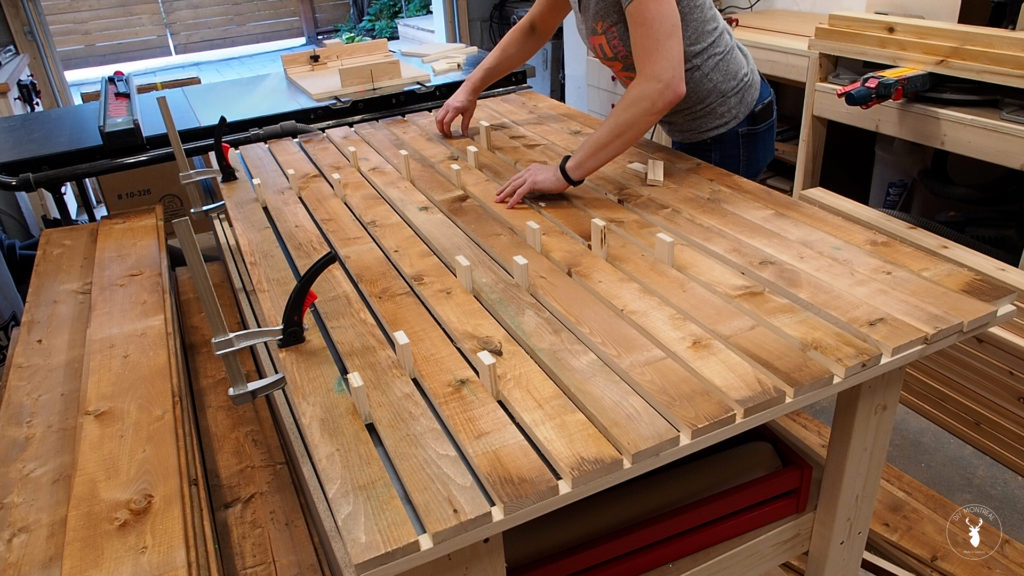
Next, I dropped in some vertical supports, but first clamped a slat to each edge to get the exact spacing I’ll need. I could then position my vertical supports and line up the top with the edge of the first slat.
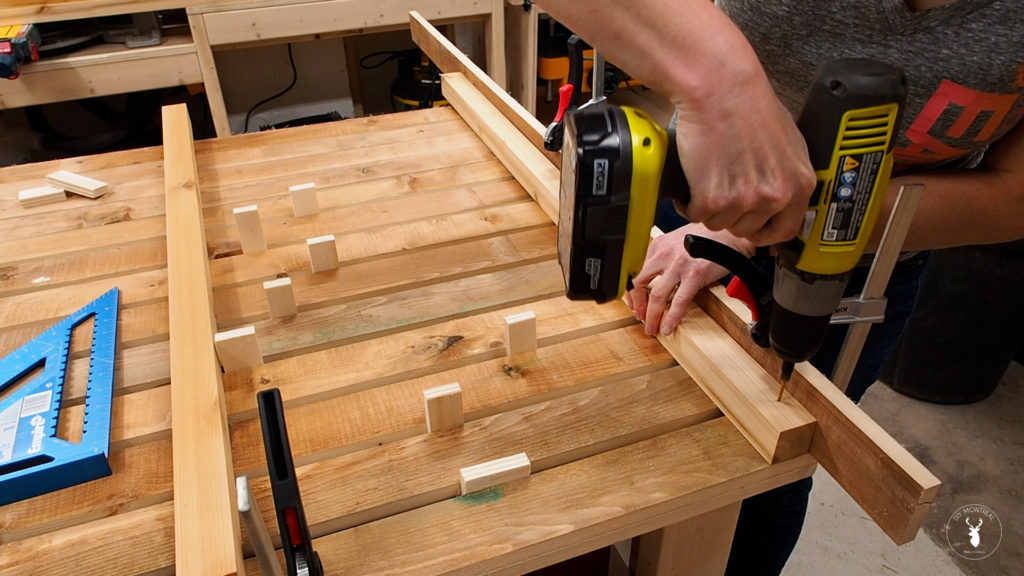
I then drilled a pilot hole to avoid splitting, and drove in a decking screw. With my first screw in, I could just work my way down, making countersink pilot holes and driving screws.
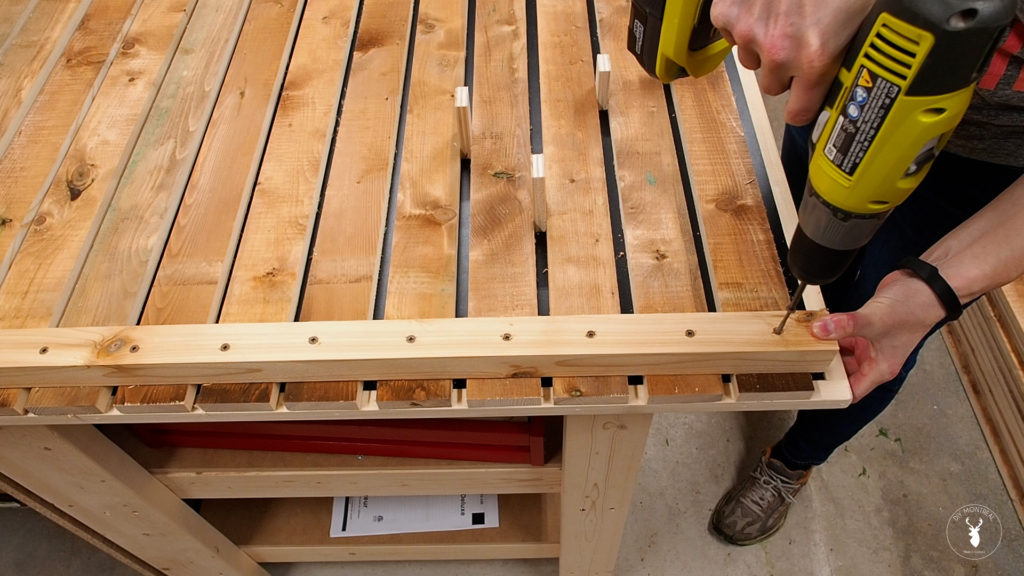
I repeated the same process on the other side of the panel, and added 2 more supports in the middle. I spaced them out evenly and used a large speed square to make sure they were perpendicular to the slats, then added some more screws after first making countersink pilot holes.
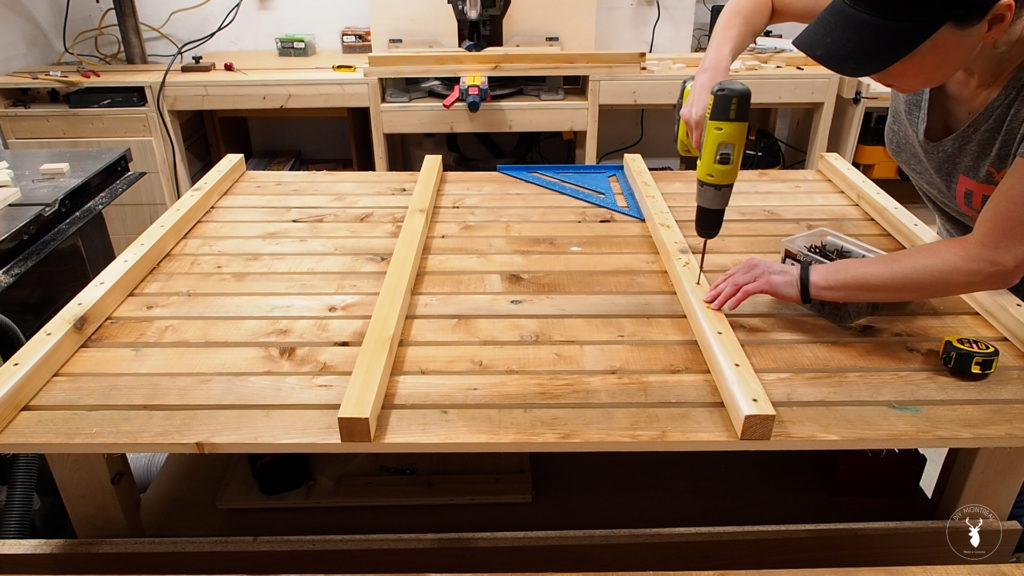
With one side assembled, I repeated the process to make a second identical panel, then moved on to making the 2 shorter sides in the same manner. For the 2 smaller panels, I pre-drilled some pilot holes in the outer vertical supports that I’ll later use to attach the four panels together.
Once all 4 panels are ready, it’s time to assemble this planter. The pieces fit together like a puzzle. Using a clamp to hold the box together temporarily, I connected the panels to each other using the pre-drilled pilot holes.
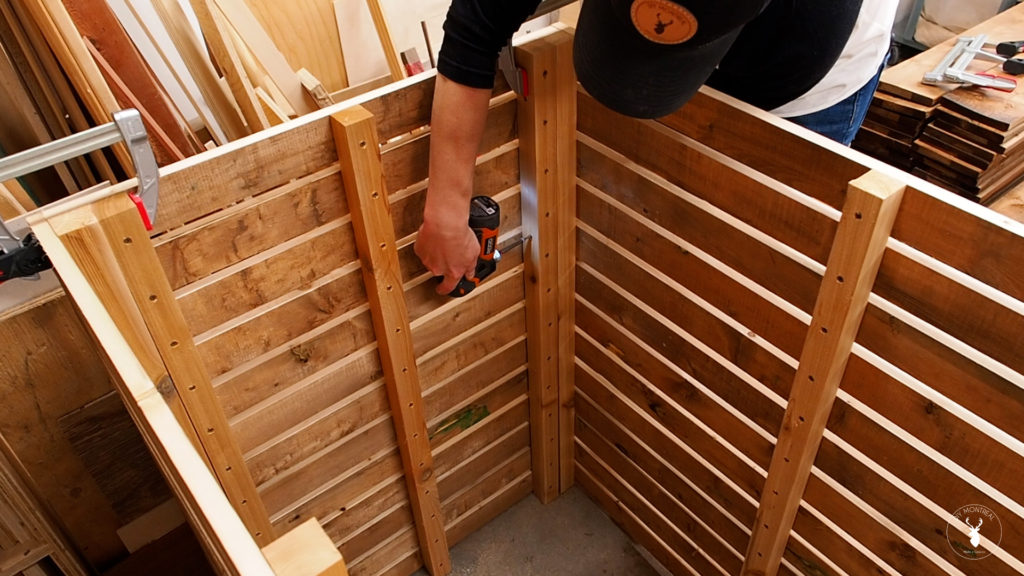
Next, it’s time to add a floor to this planter box. I grabbed some more squared up cedar posts that I cut to fit the inside of the box and assemble them into a simple frame.
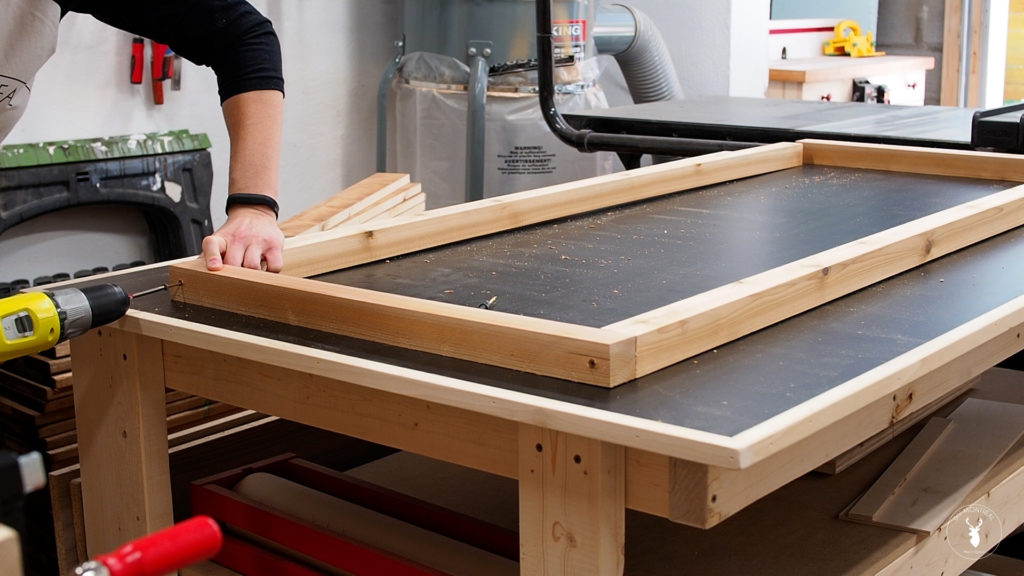
I dropped in the frame into the box just so I could mark out where the frame will get attached to the vertical supports. Then it was just a matter of drilling countersink pilot holes where I had marked them out.
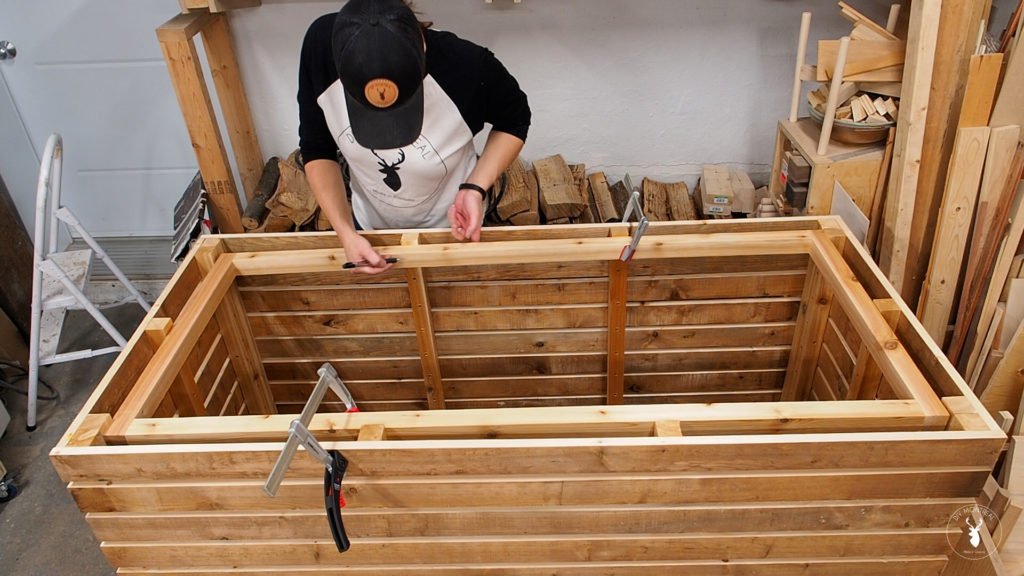
Before dropping in the frame, I inserted some spacers just above the bottom slat that will help catch the frame and support it in place while I screw it in. With the frame sitting on the spacers, I went around driving in some 3 inch screws into each of the vertical supports. I also added screws to the corners making a pilot hole on the diagonal and driving in a screw.
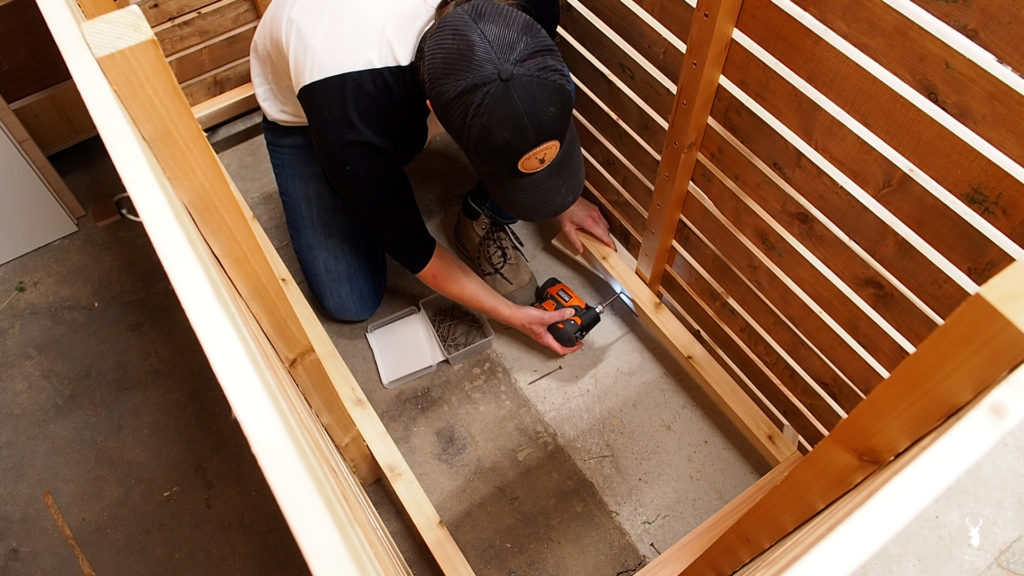
I cut the floorboards to length and used a jigsaw to cut out the notches for the vertical supports. With the notches cut, I could drop in the first floorboard and drive some screws into the frame, after first making some pilot holes.
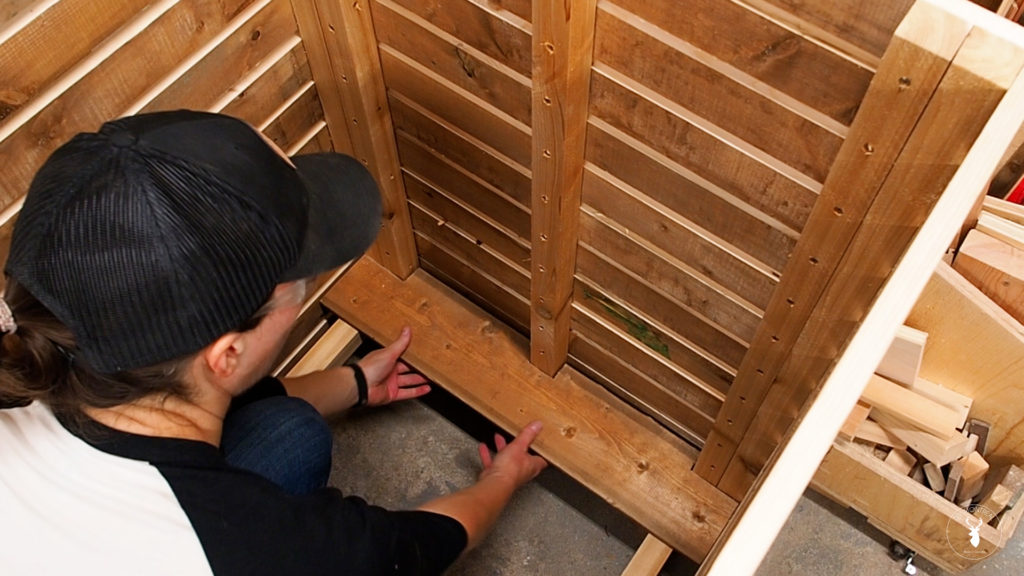
I added some spacers to allow for drainage and dropped in the next board, screwed it down, and kept going like this until I reached the end.
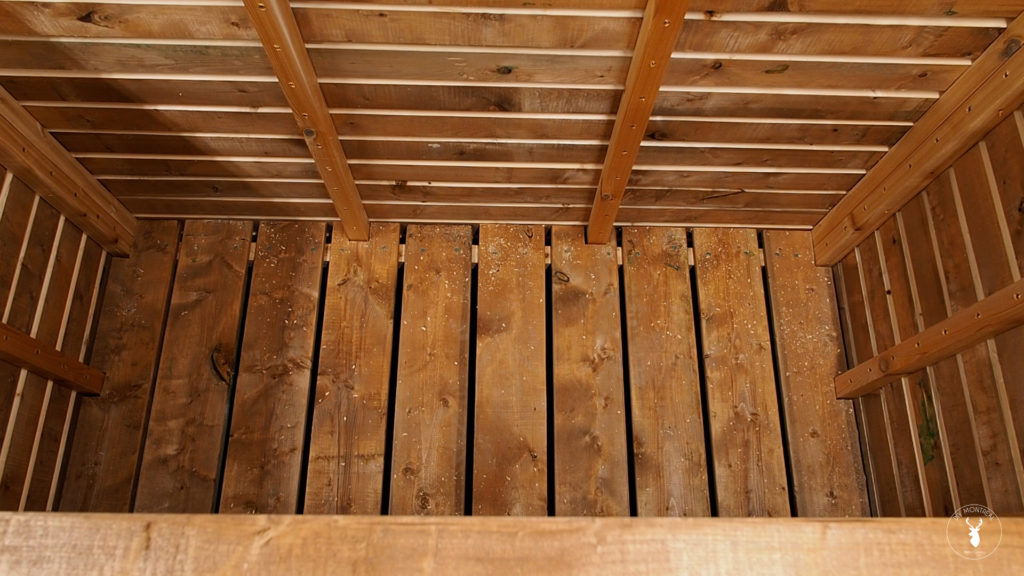
I’m going to add a frame to cap the top, but first I need to drill some pocket holes using my mini pocket hole jig. I made a hole between each of the vertical supports, and this will allow me to secure the top without any visible screws.
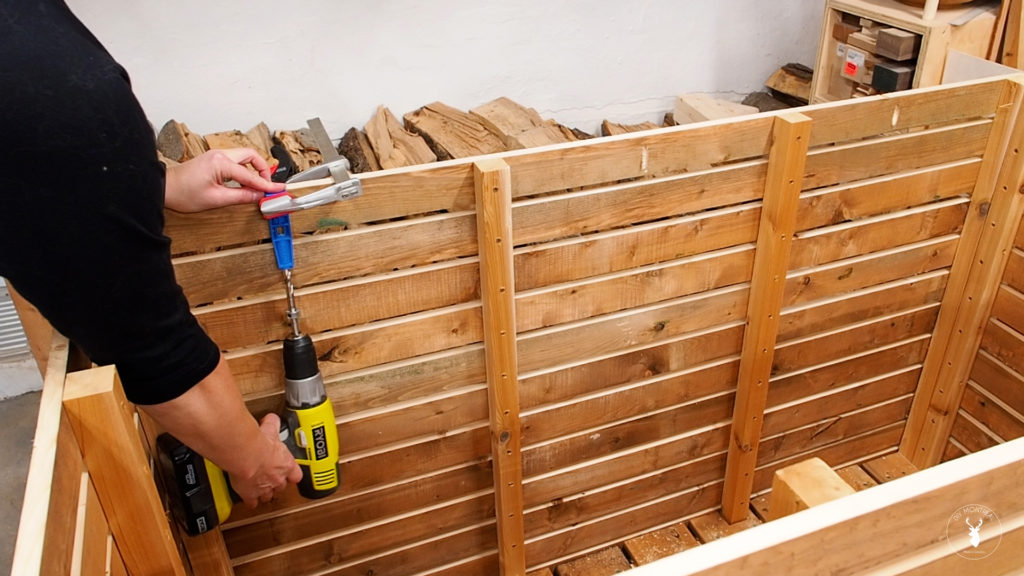
With that done, it’s time to cut the upper frame with mitered corners. I set my miter saw to 45 degrees and cut the frame. To help hold the frame together I’m adding pocket screws to the 4 corners. This will just help get all the miters aligned and make it easier to keep everything aligned when comes time to securing it to the planter.
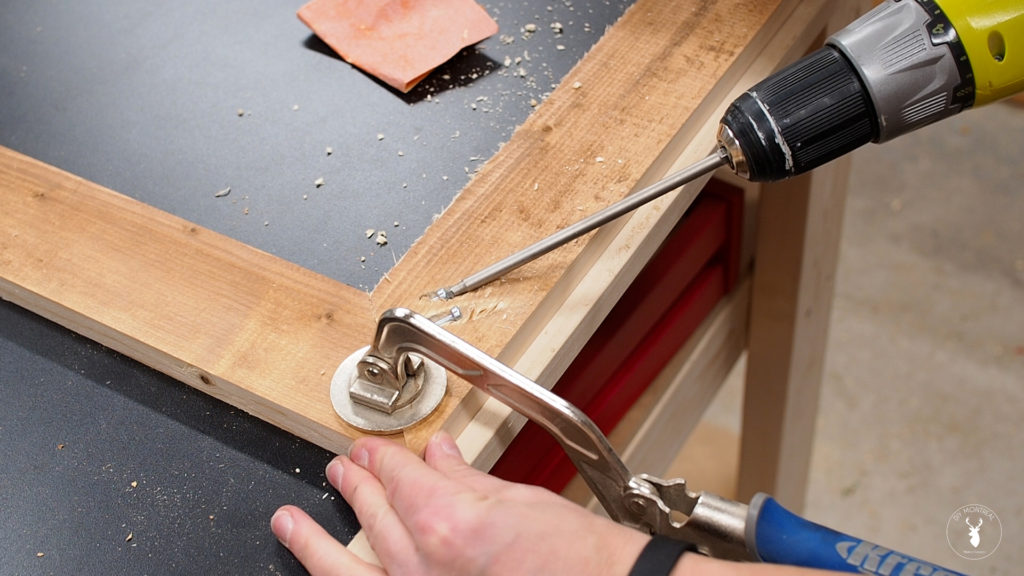
I dropped on the assembled frame and used some clamps to force all 4 corners into alignment, and locked it down. After that, securing the top with some pocket screws was easy.
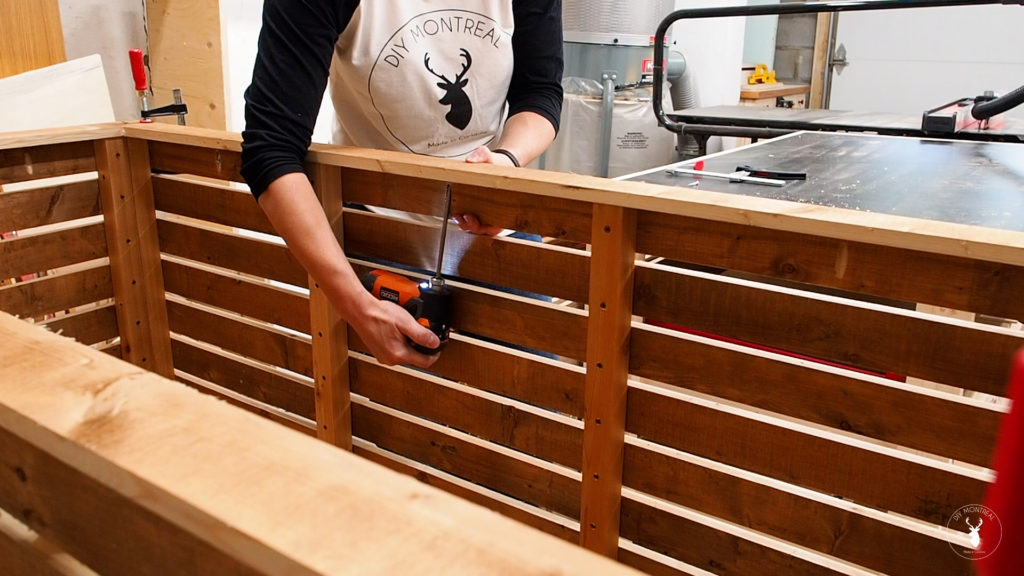
The last step is to add a liner to hold in all the soil so it doesn’t slip through the cracks. For this I’m using a weed barrier. I cut it to rough size and dropped it in, then lined up one side with the top edge and used a staple gun to attach it just under the lip. I laid out the weed barrier as best I could, making sure to keep it loose so it won’t tear away once the soil is added. I then kept stapling away, up to the other side, and cut away the excess fabric. I cut out another small piece for each end, making sure to overlap the seams, and again used my staple gun to attach it starting from the top edge, and making sure it wasn’t too tight.
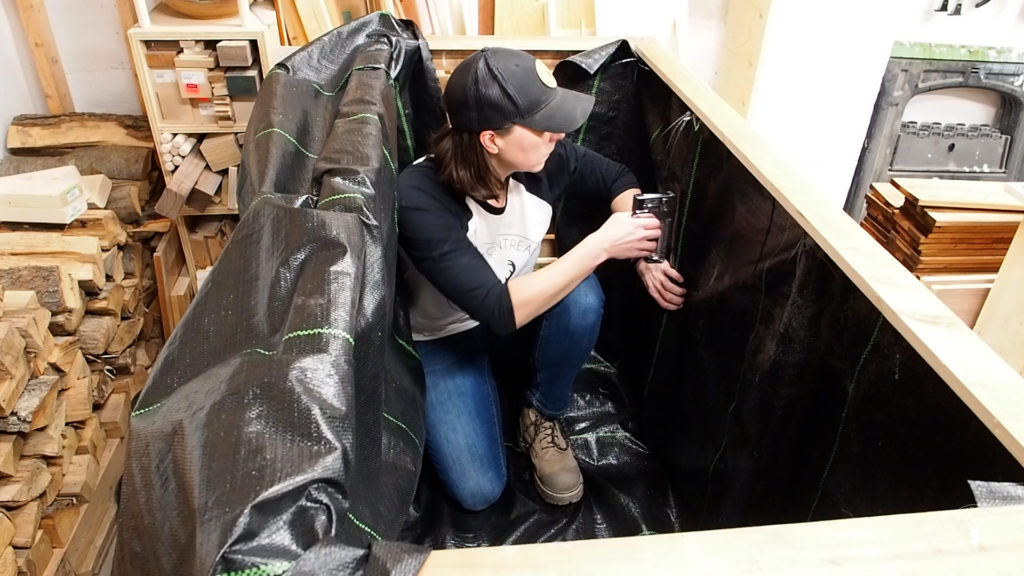
With that done, it’s time to test for drainage. The weed barrier says it will allow water to pass, but after a quick test I could see that wasn’t at all the case. The water just sits there. So I decided to poke a few holes through the bottom, which should allow the water to drain without letting out the soil.
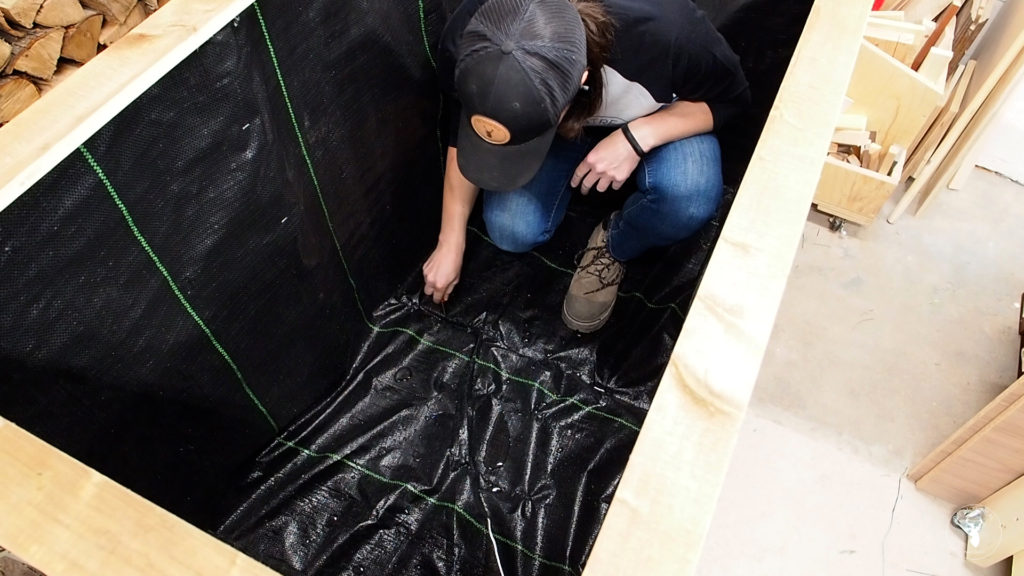
So that’s a wrap on this planter! My cat doesn’t seem too sure about it, but luckily for her, my friend will be over soon to pick up her new planter. I can’t wait to see what she plants in it, and I’ll be sure to post a picture over on my Instagram page once she does.
